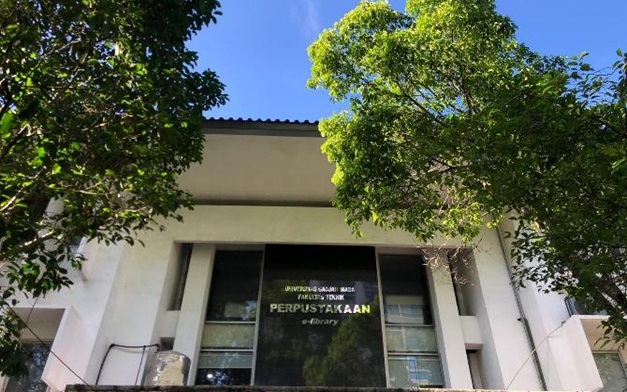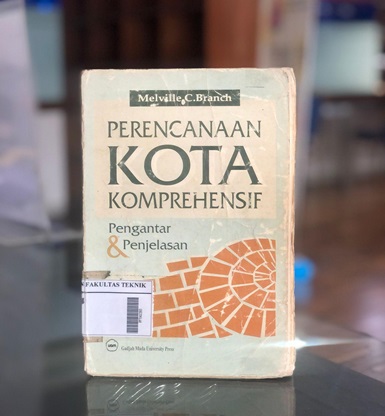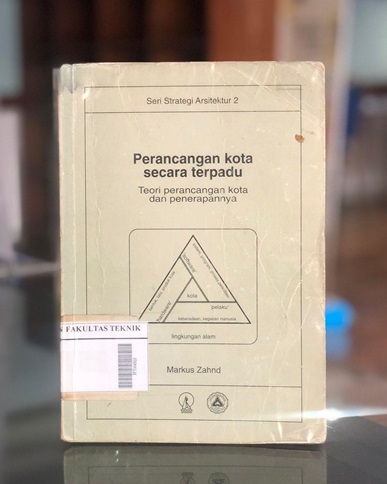- Home
- Post by
- page. 9
admin
Announcement
Announcement Tuesday, 21 May 2024
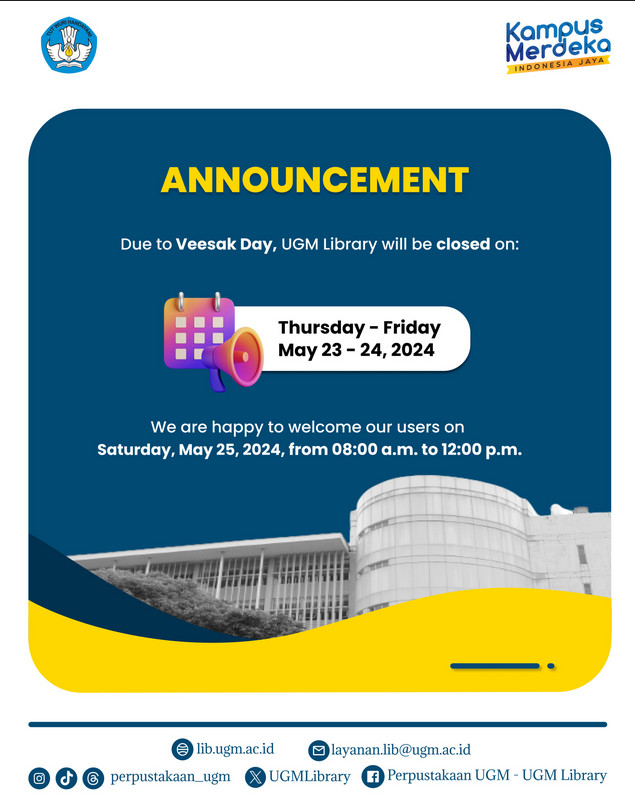
Announcement
Announcement Wednesday, 8 May 2024

Exploring the Digital Era with Digilib & Co-Working Space at FISIPOL UGM
News Wednesday, 8 May 2024
DIGILIB (Digital Library) & Co-Working Space Provides Discussion Rooms with Automatic Room Reservation
Yogyakarta (08/05/2024) - DIGILIB & Co-Working Space FISIPOL UGM is an innovative facility that serves not only as a repository for digital resources but also as spaces to meet the diverse needs of students, faculty, and staff members of both FISIPOL UGM and UGM community. Located within the FISIPOL UGM building, this modern space reflects FISIPOL's commitment to adopting technology and innovation in education while supporting the goals of SDGs point 9, which emphasize promoting sustainable and inclusive industrial development, innovation, and infrastructure.
One of the main features of DIGILIB & Co-Working Space is the provision of specially designed discussion rooms to facilitate academic conversations. These discussion rooms are equipped with the latest audiovisual equipment and comfortable seating arrangements, creating an ideal environment for productive interactions and debate. DIGILIB & Co-Working Space FISIPOL UGM is spread across two floors of the building, offering 5 discussion rooms available free of charge for FISIPOL UGM members. On the 3rd floor, there are 3 discussion rooms available with capacities ranging from 3 to 10 people. Meanwhile, on the 2nd floor, there is one discussion room and one mini theater or cinema room that can be used for academic purposes.
A key aspect of this initiative is the provision of discussion rooms equipped with automatic room reservation technology. This not only enhances resource efficiency but also demonstrates how technology can be used to improve productivity and collaboration. Through automatic reservation, time previously wasted on manual processes can be allocated to other productive activities, aligning with the goals of SDGs point 9. This process is facilitated through an easy-to-use online platform available at digilib.fisipol.ugm.ac.id, where FISIPOL UGM members can easily reserve discussion rooms at their desired dates and times with just a few clicks. This streamlines the booking process and ensures efficient utilization of the facilities.

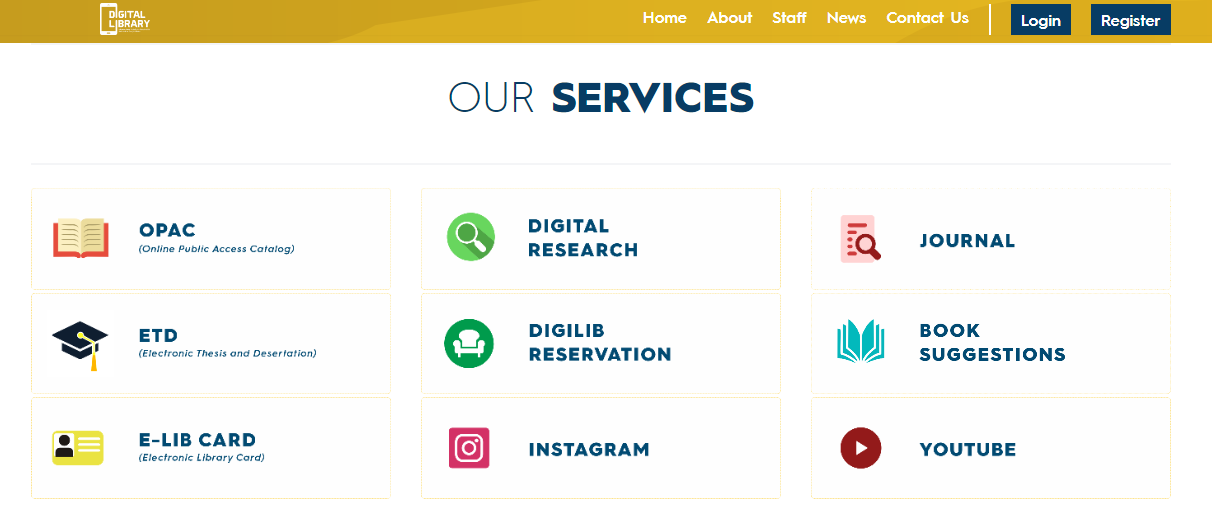
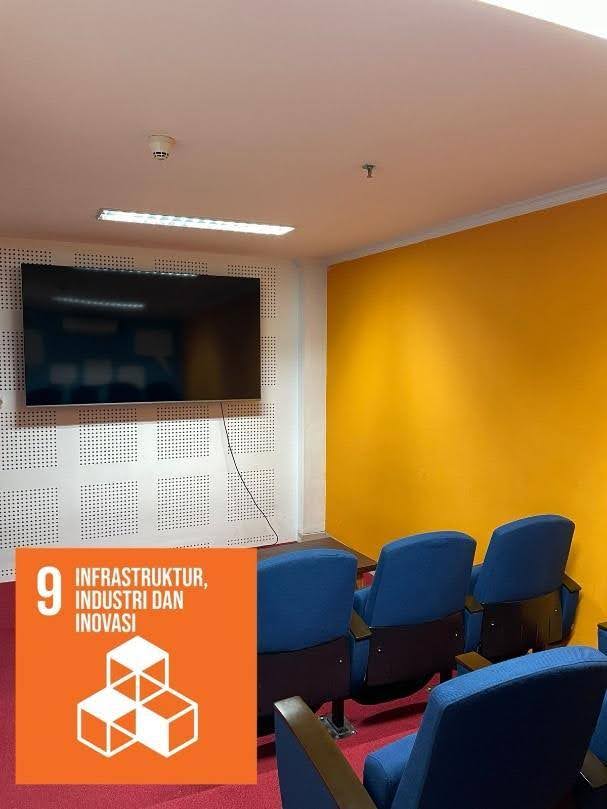
Additionally, DIGILIB & Co-Working Space facilitates the exchange of knowledge and innovation through an open and inclusive environment. By enabling students, faculty, and staff to collaborate and share ideas, this facility helps strengthen technological and innovative capacities within the academic community. Beyond discussion rooms, there are PCs available to support academic processes that can be freely used by FISIPOL UGM members. This aligns with the principles of SDGs point 9, which emphasize the importance of building local capacities in adopting and developing technology.
Thus, DIGILIB & Co-Working Space FISIPOL UGM not only serves as a modern center for learning and collaboration but also serves as a model for how technology can be used to support the achievement of SDGs point 9. By continuously strengthening technological infrastructure and fostering innovation, this facility plays a role in building a more inclusive and sustainable future for the entire academic community.
(Contributor: Abdullah Faedi Rahman)
Gazebo on campus: When studying in a relaxed atmosphere is fun
News Friday, 19 April 2024
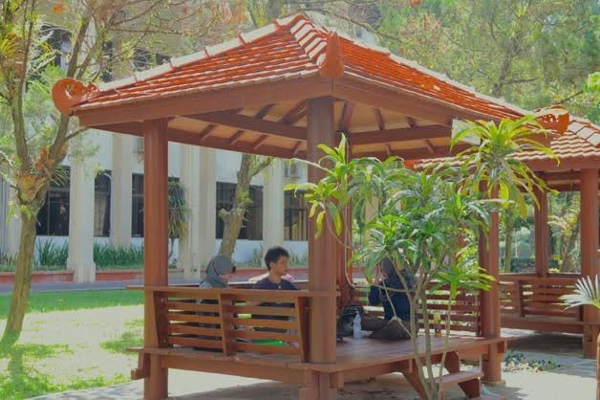
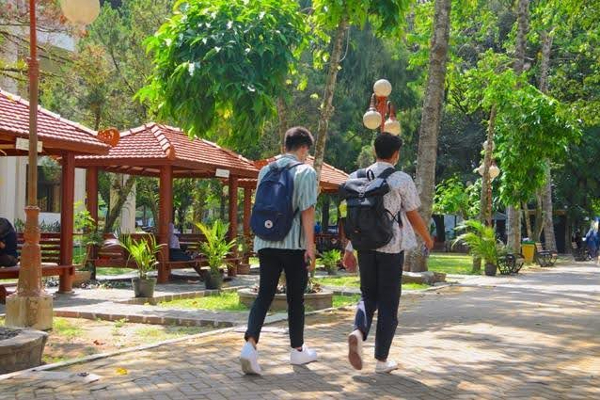
Library and Archives of UGM optimizes open spaces by implementing gazebo facilities as an innovative system to encourage independence and collaboration among UGM community members as an effort to support SDGs goals.
Yogyakarta, March 28, 2024 - Library and Archives of Universitas Gadjah Mada (UGM), as one of the learning facilities for UGM’s community, has introduced an innovative step to leverage the use of open space by providing gazebo facilities. This step aligns with UGM's commitment to create an inclusive environment that supports academic activities and collaboration among the academic community while also strengthening the personal preferences to study within the campus environment.
The gazebo facility is strategically located in the courtyard of the UGM Library and Archives and is designed to serve as a meeting point for the entire UGM community to interact and collaborate informally. With a modern and eco-friendly design concept, this gazebo also offers a comfortable open space for discussions, group meetings, or even just a brief rest between academic activities. The gazebo is also equipped with lighting and power supply access to support its use.
UGM Library and Archives’ initiative to optimize open space by implementing gazebo facilities has received widespread support from the academic community and various stakeholders. This is evidenced by the gazebo's use, which is almost fully occupied by the UGM community. It is expected that this initiative will serve as an example for other libraries to effectively utilize open spaces to encouragecollaboration in sustainable infrastructure development to support the achievement of Sustainable Development Goals (SDGs).
(Contributor: Ane Tefvy Styorini)
Nutrigenomics and Nutrigenetics in Non-Communicable Diseases (NCDs). What are their Roles? – Book Review
News Wednesday, 3 April 2024

Currently, global attention is focused on Sustainable Development Goals (SDGs). The main objective of SDGs is to achieve sustainable development in various aspects of life. One of these goals is to ensure a healthy life and improve the well-being of all people of all ages. This goal reflects a commitment to providing universal access to quality healthcare services and efforts to enhance health conditions and well-being for all layers of society worldwide.
In the past few decades, there has been a shift in the disease burden from infectious diseases to Non-Communicable Diseases (NCDs). NCDs account for approximately 74% of all global deaths. Similarly, in Indonesia, about 69% of Disability Adjusted Life Years (DALYs) lost are attributed to NCDs, including cancer, stroke, hypertension, and diabetes mellitus. In the context of the third Sustainable Development Goals (SDGs) on Good Health and Well-being, one of the targets for 2030 is to reduce premature deaths caused by NCDs by one-third through prevention and treatment efforts.
With the rapid advancements in healthcare technology, a new branch of science has emerged known as nutrigenomics and nutrigenetics. As mentioned in this book, nutrigenomics examines the interaction between nutrient intake (macronutrients, micronutrients, and bioactive compounds) and gene expression within the body. Meanwhile, nutrigenetics focuses on studying how an individual's genetic variations can influence their response to nutritional intake. Through a deeper understanding of these two branches of science, it is expected that doors will open towards a personalized approach to nutrition and health, aligning with the unique needs of each individual.
In this book, the author provides a detailed explanation of nutrigenomics, nutrigenetics, genetic variations, Single Nucleotide Polymorphism (SNPs), chromosome structure and organization, and gene expression. Not only that, but the author also elucidates human genetics and the terminology commonly used in this field to facilitate a better understanding of genetics. Beyond the foundational explanations, the book presents case examples of nutrigenetics and how genetic variations can impact nutritional requirements. The cases discussed include phenylketonuria, lactose intolerance, galactosemia, and deficient aldehyde dehydrogenase enzyme.
Another advantage of this book is the presence of dedicated chapters addressing nutrigenomics and nutrigenetics in Non-Communicable Diseases (NCDs) such as diabetes mellitus, hypertension and heart diseases, cancer, and obesity. In these chapters, readers can gain a more detailed understanding of the biological mechanisms, existing genetic variations, interactions between genes and dietary factors, and appropriate nutritional recommendations. For instance, there is a discussion on the genetic variation in the APOA2 gene, where individuals with the CC genotype are responsive to saturated fats, thereby having a higher risk of obesity and cardiovascular diseases. The recommended diet for individuals with the CC genotype in the APOA2 gene is to reduce saturated fat intake to mitigate the associated risks.
This book is highly suitable for nutrition students and practitioners interested in exploring the branches of nutrigenomics and nutrigenetics in the rapidly evolving landscape of healthcare technology. The nutrigenomic and nutrigenetic approaches outlined in the book are incredibly beneficial in providing precise nutritional recommendations tailored to the genetic variations of each individual, especially concerning the prevention and treatment of Non-Communicable Diseases (NCDs). This knowledge is anticipated to continue to advance and play a pivotal role in achieving the third goal of the Sustainable Development Goals (SDGs), which is Good Health and Well-being. This book can be found in the Borrowing and Returning Book Room of the UGM Library.
Contributor: Annisa Fitria Nur Azizah
Announcement
Announcement Wednesday, 27 March 2024

Toyagama: Drinking Water Solution at UGM Library and Archives That Keeps Visitors Comfortable for Hours!
News Wednesday, 20 March 2024
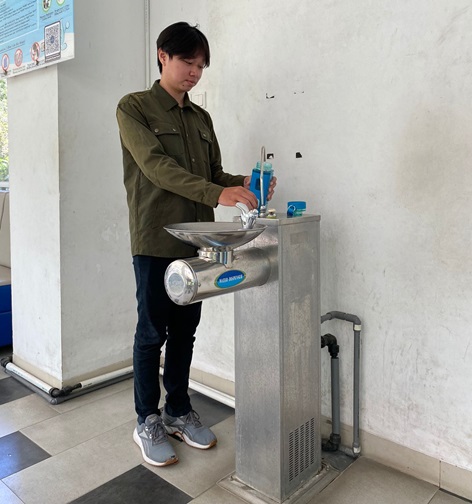
Visitors of the UGM Library and Archives are currently utilizing the Toyagama facilities
Gadjah Mada University (UGM) Library and Archives provides a self-service drinking water facility commonly known as Toyagama.
Yogyakarta, March 19, 2024 - The Toyagama Drinking Water Supply System (SPAM) is an initiative aimed at providing self-service drinking water for the academic community at Universitas Gadjah Mada, including the Library and Archives. The provision of Toyagama is one of UGM's efforts to achieve Sustainable Development Goals (SDGs), specifically SDG 6, which aims to ensure adequate access to clean water for everyone.
Strategically located within the library, the provision of Toyagama enhances access to clean water for users and supports the achievement of universal access to clean water. The users can utilize the Toyagama facilities located on the first floor of the UGM Library and Archive in the lobby area, making it convenient for the users to access the water.
The provision of Toyagama is a positive step towards creating a learning environment that supports the productivity of library users. With Toyagama available, they can manage their hydration needs efficiently. Proper hydration enhances the productivity and activities of visitors without the need to seek water sources outside the library.
Furthermore, the provision of Toyagama facilities is a tangible effort to reduce plastic waste. With Toyagama facilities available at the UGM Library and Archives, the dependency on single-use plastic water bottles can be reduced. This is undoubtedly a step towards increasing environmental awareness and supporting waste and plastic pollution management targets.
Contributor: Farahdhila Yasmin Al-Husna
Library Opening Hours
Announcement Thursday, 14 March 2024

Spread Love for those with Rare Disorders
News Thursday, 7 March 2024

Pengunjung mengamati berbagai narasi dan foto yang ditampilkan di Pameran Lokakarya Foto ARTICURARE
The Indonesia Rare Disorders Community and Lensa Anak Terminal, in collaboration with the UGM Library and Archives are organizing a photo workshop exhibition on the compassion shown in the daily lives of children with rare disorders.
Yogyakarta, March 5, 2024 - The Lobby of the UGM Library and Archives looks different. At the main entrance, library users are welcomed by images that speak volumes with millions of words. A photo workshop exhibition titled “ARTICURARE: Articulation of Love in the Daily Lives of People with Rare Disorders” was officially opened. Held in the WOW meeting room, the opening of the exhibition was attended by representatives from UGM Library and Archives, The Indonesia Rare Disorders Community, Lensa Anak Terminal, and participants of the Articurare photo workshop. This event is a concrete form of UGM Library and Archives to realize the Sustainable Development Goals.
Erna Widayati S.E. M.M., Head of Archives at UGM Library and Archives, expressed her appreciation for this collaboration, underlining the importance of increasing awareness of the existence of people with rare disorders in society. This activity is an effort to increase awareness in reducing premature mortality due to non-communicable diseases as a form of support for the achievement of Sustainable Development Goals.
Discussions involving photo workshop participants were also held, opening a window to the stories behind each photo on display. With the presence of various narratives and photos of the daily lives of children with rare disorders, this exhibition is a reminder of the importance of inclusion and empathy in fighting for their rights.
This exhibition can be visited in the lobby of UGM Library and Archives from March 5 to March 8, 2024. Various narratives and photos of the daily lives of children with rare disorders are a place to show the love that is present in the daily routine of children with rare disorders. The rare disorders experienced by these children include Cornelia de Lange Syndrome (CdLS), Achondroplasia, Apert Syndrome, and Crouzon Syndrome.
This event is part of the commemoration of World Rare Disease Day 2024. This event emphasizes the commitment to support the Sustainable Development Goals, especially in efforts to improve the health and welfare of society.

Diskusi karya yang ditampilkan dalam Pameran ARTICURARE
Through partnership with various communities, UGM Library and Archives has proven its commitment in building an inclusive society and caring for all individuals, without exception. This collaboration is expected to have a significant positive impact.
Contributor: Wasilatul Baroroh

